Black Women of the Harlem Renaissance Era
Black Women of the Harlem Renaissance Era
Edited by Leantin L. Bracks and Jessie Carney Smith
ROWMAN & LITTLEFIELD
Lanham Boulder New York London
Published by Rowman & Littlefield
A wholly owned subsidiary of The Rowman & Littlefield Publishing Group, Inc.
4501 Forbes Boulevard, Suite 200, Lanham, Maryland 20706
www.rowman.com
16 Carlisle Street, London W1D 3BT, United Kingdom
Copyright 2014 by Rowman & Littlefield
All images courtesy of Special Collections, John Hope and Aurelia E. Franklin Library, Fisk University, Nashville, Tennessee
All rights reserved . No part of this book may be reproduced in any form or by any electronic or mechanical means, including information storage and retrieval systems, without written permission from the publisher, except by a reviewer who may quote passages in a review.
British Library Cataloguing in Publication Information Available
Library of Congress Cataloging-in-Publication Data
Black Women of the Harlem Renaissance Era / edited by Leantin L. Bracks, Jessie Carney Smith.
pages cm
Includes bibliographical references and index.
ISBN 978-0-8108-8542-4 (cloth : alk. paper) ISBN 978-0-8108-8543-1 (ebook) 1. American literatureAfrican American authorsEncyclopedias. 2. African American women authorsBiography. 3. Harlem RenaissanceEncyclopedias. 4. African American women artistsBiography. 5. African American arts20th century. 6. African Americans in literatureEncyclopedias. 7. Harlem (New York, N.Y.)Intellectual life20th centuryEncyclopedias. I. Bracks, Leantin L., editor. II. Smith, Jessie Carney, 1930- editor.
PS153.N5B557 2014
810.9'928708996073dc23
2014016465
 The paper used in this publication meets the minimum requirements of American National Standard for Information SciencesPermanence of Paper for Printed Library Materials, ANSI/NISO Z39.48-1992.
The paper used in this publication meets the minimum requirements of American National Standard for Information SciencesPermanence of Paper for Printed Library Materials, ANSI/NISO Z39.48-1992.
Printed in the United States of America
To the black women of the Harlem Renaissance Era and the women who supported their vision.
Preface
The other side has not been represented by one who lives there. And not many can more sensibly realize and more accurately tell the weight and the fret of the long, dull pain than the open-eyed but hitherto voiceless black woman of America.
Anna Julia Cooper, 18561964
One of the goals of every scholar is to produce works that add to and enhance the understanding and discussion of a time period, event, or idea. One of the ways that we have chosen to address this goal in this text is to reclaim the life stories and legacies of individuals who have contributed to the progress and humanizing of the United States. It is the era that includes the Harlem Renaissance and the often unrealized or limited exploration of black womens lives that are revealed in this text. Researching black women of the Harlem Renaissance era serves to enhance the cultural and political involvement of a people who, by 1919, had only been established on paper as citizens for fifty-four years. There was much work to be done by black Americans to remove and destroy systematic racism and disrespect, as well as change hearts and attitudes. Although the Harlem Renaissance primarily focuses on a literary and artistic awakening as achieved through opportunity and access, it also speaks to the determination of women to change and transform their lives and the quality of life for their families, and express their own desires to be full partners in every way. Women of this era did not limit themselves to one aspect of transformation, but they challenged and redefined many aspects of society.
When one speaks of a renaissance person, a vision of a multitalented, educated activist and role model comes to mind, but seldom does that vision include women. Women during this period were multitasking in spheres beyond the home and impacting families and communities both within and outside of the black community. As renaissance women, they operated in multiple spheres of change, while opening the door of possibilities for others. Black women found opportunities to work outside the home or take on roles that may have previously only been held by men, or they took to the streets to challenge systems, racism, and discrimination. The contributions of these women can be accessed in this text alphabetically or through their talents and various roles, from activists and entertainers to anthropologists and writers and much more. In researching the era, we also found it important to recognize the lives of white women who aided black women in creating change.
Those interested in the Harlem Renaissance era and the role of black women in society at this juncture in American and African American political, social, and economic history, and those with an interest in the ingenuity and determination of the human spirit, will find this text an interesting, informative, and affirming view of this time period, which extended from 1919 to 1940. Whether the reader is familiar with the significant figures of the time period, one who browses through the alphabetical listing for names unfamiliar yet intriguing, or one who is seeking names in various categories as presented by the appendix, there is much to know and learn about all aspects of this era, which is inclusive of such artists and creators as sculptor Meta Warrick Fuller, textile designer Lois Mailou Jones, and composer Florence Smith Price. Biographies include entrepreneur Lillian Harris Dean, orchestra leader Marie Lucas, playwright Eulalie Spence, and sociologist Elizabeth Ross Haynes. The life stories of the women of the Harlem Renaissance era are told in such a way as to inspire further exploration of these important figures both individually and collectively and actualize their legacies by reclaiming a compilation of stories about lives well lived.
By casting our net widely, we embraced several white women who helped a number of black women along their way and became renaissance luminaries. For the financial support that these women provided, their work in founding black organizations, or their influence with publishers to recognize the work of black renaissance women, they are recognized as patrons of the era. Thus, we include in our alphabetical list such women of means as Charlotte Osgood Mason, affectionately known as Godmother (a term that Mason encouraged her beneficiaries to use); Mary White Ovington, a cofounder of the National Association for the Advancement of Colored People; and Annie Nathan Meyer, founder of Barnard College.
We chose an easy arrangement of the book, beginning with the preface and continuing through the chronology, introduction, entrants, sources, index, and a listing of editors and contributors. While we preferred to include numerous illustrations, we were required to limit the size of our work. Hence, there are some images of women of the Harlem Renaissance era. Our restrictions further led us to limit the length of the entries, yet we were tempted to say much more about these fascinating women. The cross-references will guide the reader to names by which an entrant may also be recognized.
As a result of our efforts, this work also offers new ways to view the Harlem Renaissance and a means to further acknowledge the people and forces that made the time such a pivotal period in the early twentieth century. The more one recognizes and shares the stories, the more the cultural breadth and depth of perseverance, ingenuity, and belief in the inner voiceverses worldly exclusionis revealed. Women of the Harlem Renaissance era immersed themselves in the changing times, while engaging the worst and enjoying the best that this time had to offer.
In our efforts to create a thought-provoking, illuminating, and engaging text, we would like to thank our writers for researching, writing entries, and helping to make this work possible. It is appropriate that we thank Aisha M. Johnson, special collections librarian at the John Hope and Aurelia E. Franklin Library at Fisk University, for scanning a carefully selected group of photographs. We are also grateful to Bobby Bracks, an accomplished artist, for photographing a rare and original work, and all others who contributed their time, enthusiasm, and encouragement to this project.
Next page
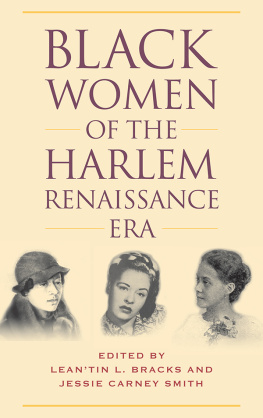



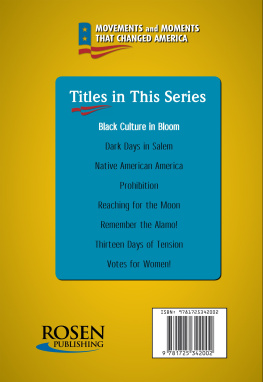

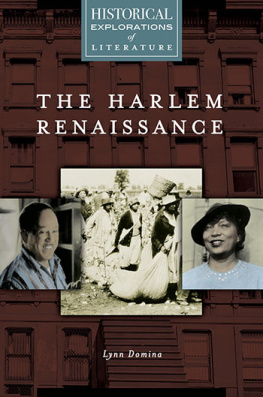
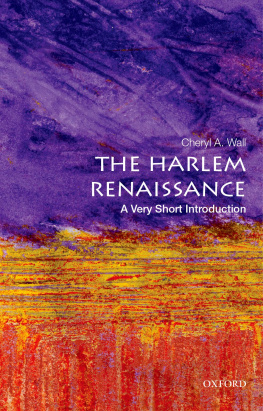

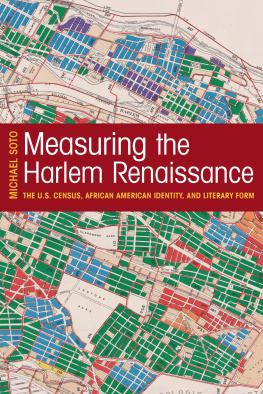
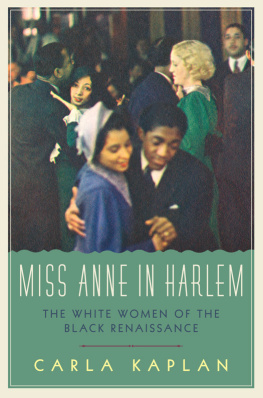
 The paper used in this publication meets the minimum requirements of American National Standard for Information SciencesPermanence of Paper for Printed Library Materials, ANSI/NISO Z39.48-1992.
The paper used in this publication meets the minimum requirements of American National Standard for Information SciencesPermanence of Paper for Printed Library Materials, ANSI/NISO Z39.48-1992.